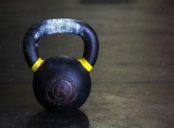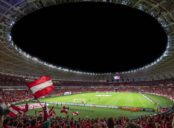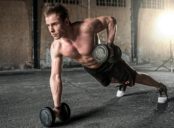Cristiano Ronaldo Diet: Unlocking the Secrets to its Success

Introduction: An Overview of the Cristiano Ronaldo Diet
When it comes to elite athletes, Cristiano Ronaldo stands out not only for his exceptional football skills but also for his incredible physical fitness and endurance. One of the key factors contributing to Ronaldo’s success is his strict and meticulously curated diet plan. In this article, we will delve into the intricacies of the Cristiano Ronaldo diet, exploring its different types, popular choices, and the quantitative measurements that make it so effective. We will also discuss the variations of the diet, examine its historical advantages and disadvantages, and ultimately shed light on why it has become such a phenomenon.
The Cristiano Ronaldo Diet: Understanding its Components

The Cristiano Ronaldo diet is a carefully crafted eating plan that is tailored to meet the specific nutritional needs of the renowned footballer. It focuses on lean protein sources, complex carbohydrates, and healthy fats to fuel his intensive training sessions and optimize performance. While there are different types of the Cristiano Ronaldo diet, they all share common elements such as a high intake of fruits, vegetables, whole grains, and lean meats. Additionally, Ronaldo avoids processed foods, refined sugars, and alcohol, emphasizing the importance of clean eating for optimal physical performance.
Exploring the Different Types of the Cristiano Ronaldo Diet
There are various types of the Cristiano Ronaldo diet, each with its own unique characteristics. One popular variation is the low-carb, high-protein diet, which promotes weight loss and muscle development. Another notable choice is the Mediterranean diet, which focuses on whole, unprocessed foods and healthy fats, offering a balance between sustainability and performance enhancement. Additionally, intermittent fasting has gained popularity among athletes, including Ronaldo, as a way to improve insulin sensitivity and overall metabolism. Ultimately, the selection of a specific diet type depends on an individual’s goals, lifestyle, and body composition.
Quantitative Measurements in the Cristiano Ronaldo Diet
In order to maintain peak performance, a significant aspect of the Cristiano Ronaldo diet is the attention given to quantitative measurements. Ronaldo carefully monitors his macronutrient ratios, ensuring an appropriate balance of protein, carbohydrates, and fats. He also pays close attention to calorie intake, making sure he consumes enough to meet his energy demands without unnecessary weight gain. Additionally, Ronaldo and his team of nutritionists rely on body composition analysis, including body fat percentage and muscle mass, to optimize his diet plan. These quantitative measurements play a crucial role in maintaining his physique and performance at the highest level.
Distinguishing Factors Between Different Cristiano Ronaldo Diets
Although the core principles of the Cristiano Ronaldo diet remain consistent, there are variations that differentiate one regimen from another. One notable difference lies in the timing of meals and nutrient distribution throughout the day. Some diets recommend small, frequent meals, while others advocate for larger meals with longer intervals between them. Another distinguishing factor is the emphasis on specific macronutrients, such as protein or healthy fats, to achieve different goals, including muscle development or weight management. These factors contribute to the individualization of the Cristiano Ronaldo diet, making it adaptable to the unique needs and preferences of each athlete.
A Historical Review of the Advantages and Disadvantages of Cristiano Ronaldo Diets
Over the years, various studies and expert opinions have shed light on the advantages and disadvantages of different Cristiano Ronaldo diets. One of the key benefits is the promotion of overall health and well-being through the consumption of nutrient-dense foods and avoidance of processed products. The diets have also shown positive effects on body composition, muscle development, and recovery time. However, critics argue that the strictness and rigidity of some diets may create a psychological burden or potentially lead to nutrient deficiencies if not properly managed. It is crucial to strike a balance between the benefits and potential drawbacks when considering the adoption of a Cristiano Ronaldo diet.
[INSERT VIDEO HERE]
Conclusion
The Cristiano Ronaldo diet has undoubtedly played a significant role in shaping the football star’s extraordinary physique and performance on the field. With a focus on clean eating, optimal macronutrient distribution, and careful quantitative measurements, this diet has caught the attention of athletes and fitness enthusiasts worldwide. While variations of the diet exist, each with its own unique characteristics, the core principles of fueling the body with nutrient-dense foods remain consistent. As with any dietary regimen, it is important to consider individual goals, preferences, and consult with professionals to ensure its suitability and sustainability. The Cristiano Ronaldo diet serves as an inspiration for those looking to maximize their own performance and unlock their full potential.





















